This article appeared in June issue of Terrascape, a travel magazine for which I am an editorial consultant and also write a column on photography. Read all the earlier earlier travel photography articles on India Travel Blog.
The tiny light emitting device located on the top of most cameras can be of great use in occasions when natural light is not favourable to us. Most of us generously use the flash after dark, be it indoors or outdoors. But a camera flash can make or break your photographs depending on the way it used. Here are some insights on making the best use of camera flash.
Where to use flash. The use of flash need not be limited only to situations of darkness or places where there is not sufficient light for the camera. It can be productive to use flashes even in mid-day. When you have strong and direct light, the subject can cast dark shadows in places that may appear completely dark in the photograph. Such shadows may often look ugly, especially when shooting people in strong mid-day sun when the eyes tend to be in a shadow. This can be countered by firing your flash, which can slightly brighten the areas in shadow and allow details in those parts to come out better in the picture. When the camera flash is used in this way to fill up the shadows, it is usually called ‘fill light.’
The problems with on-camera flash. When you use the flash to photograph people in low-light, it becomes the cause of the same problem as in the case of direct light mentioned in previous paragraph. The flash becomes a strong and direct light source and casts harsh shadows. When you photograph a person’s face, you may see a ring of darkness around the face in the area where the flashlight gets blocked by the person’s face. A flash can also spoil the mood and ambience of the place where it is predominantly lit by warm, tungsten lighting. The flash light is white in colour and corrupts the warm lighting in the room. If your camera permits, try to shoot with a higher ISO in the range of ISO 400 to ISO 1200 instead of using flash. This helps preserve the mood created by ambient light and prevents formation of dark shadows.
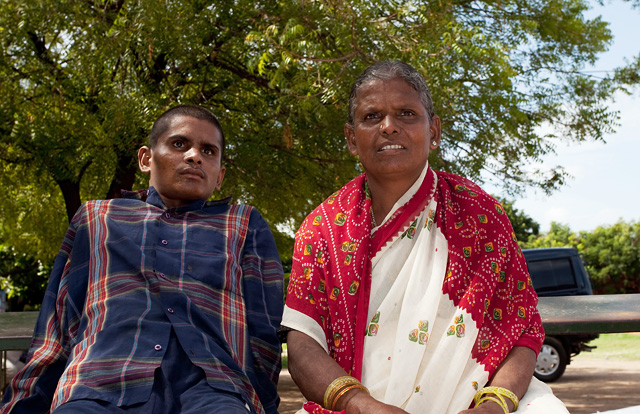
This photograph was taken on a sunny day, with these people sitting under the shade of the tree. There was some strong sunlight filtering from through the tree and their faces were lit nonuniformly. Without a flash, the areas under shadow would have appeared very dark. However, an external flash used as fill light helped light up all the areas uniformly.
Effective use of flash. An external flash can make a sea-difference to your pictures when compared to on-camera flash. The flexible design of external flashes allows you to change the direction of flash light, and where the environment permits, let’s you bounce the light from a roof or wall instead of emitting strong and direct light on the subject. An even better way to use a flash is by firing it off the camera using a remote trigger or a chord that connects the camera with your external flash. This gives you greater control on the direction of incident light.
Ladakh, the land of high passes, is also home to an ancient Buddhist culture that has remained unchanged for nearly a millennium. Every village in the region supports a monastery, usually located on a crag overlooking the village and serves the spiritual needs of the village’s population. The charm of these monasteries are many, like the ever-smiling monks, complex prayer rituals, young monks (or monklings, as a friend once called them) running around chasing each other in the monastery’s courtyards, the traditional materials of worship, the room of lamps, colourful prayer halls, exuberant festivals, the chortens (or stupas) in the premise and so on. Here is a collection of images of life and still-life of Ladakh’s Buddhist monastic institutions, captured over several visits to many monasteries over a period of three months.
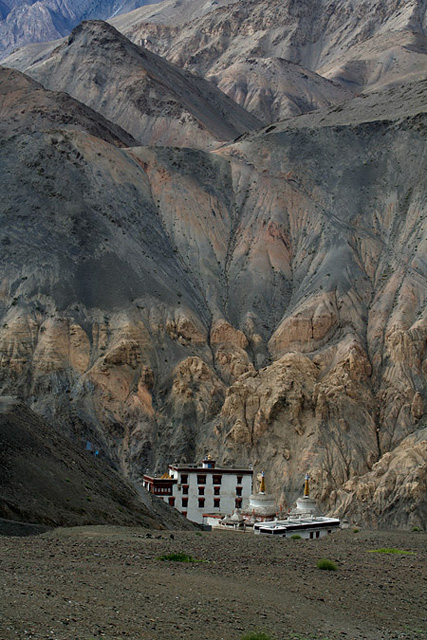
The most striking aspect of the Buddhist monasteries of Ladakh is their location. Ladakh is a remote region in itself and is separated from rest of the world by high mountains. Within it, the monasteries seem to look for the remotest possible place that keeps them away from everything worldly. Once, anyone who would like to make a visit would have had to make a slow and long climb in the rarefied air of Ladakh. Today, most of the monasteries are connected by road, though many still exist that only a few able people can approach. The Lamayuru Monastery in the picture, as you can see, is obviously in someplace faraway and remote. Yet, one can reach even here in a four wheeler. The monastery is believed to be established nearly a thousand years ago.
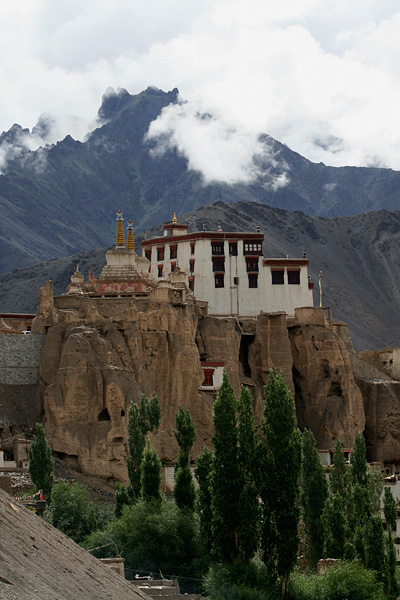
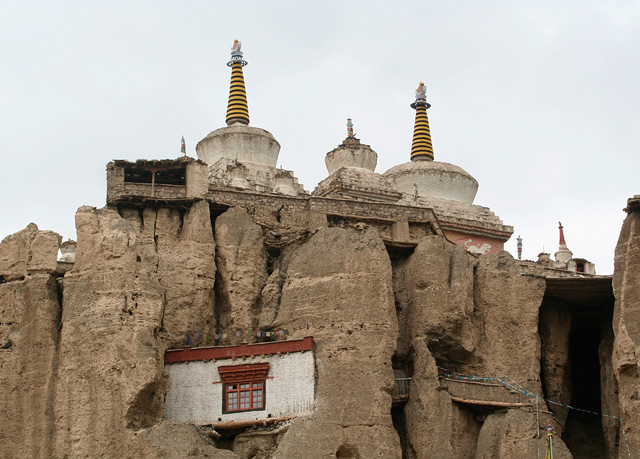
The setting of the monastery at Lamayuru Village is best described as queer. At the first sight, it appears to be hanging delicately on a mound that can collapse any moment. But it has seen a millennium pass by. Sections of the monastery go right under the ground and emerge on vertical walls, like in the picture above.
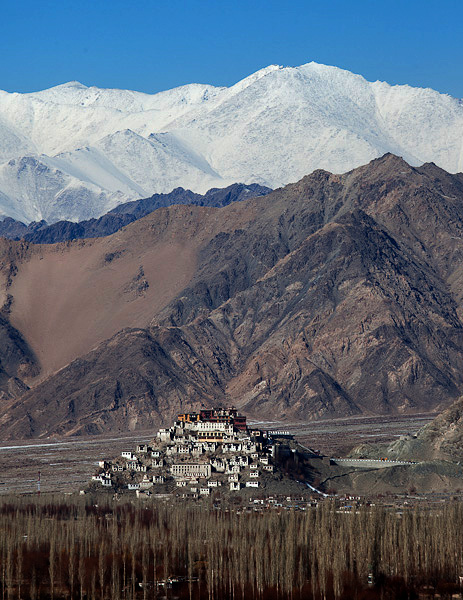
Most monasteries, like the one in Thiksey seen above, are located on a crag overlooking the village. They are built in a place not too close to the village, perhaps to keep away from the everyday life of the villages but at the same time near enough to offer religious services to the pious villagers. Thiksey is one of the largest monasteries in Ladakh, if not the largest. Its cluster of buildings spread haphazardly along a hill and the prayer hall located right on the top are often compared to Lhasa’s Potala Palace.
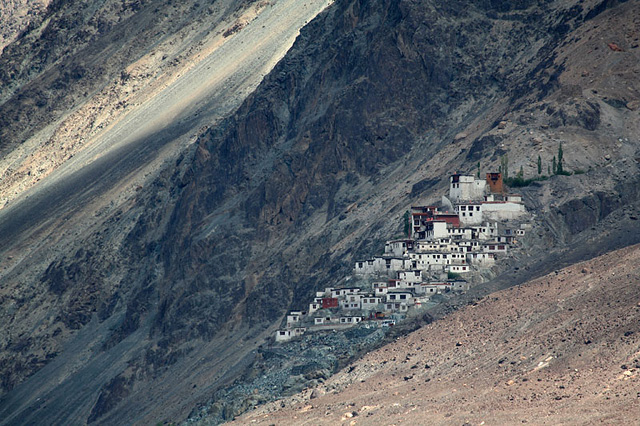
Diskit Monastery in Nubra Valley too is located high up the hill and a short climb from the village at the base of the valley.
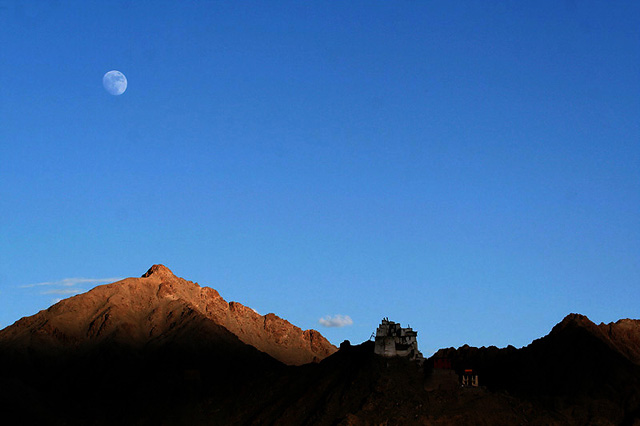
The Namgyal Tsemo Monastery high up the hill and visible like a beacon from anywhere in Leh Town is a great sight against the backdrop of tall hills that surround the town.
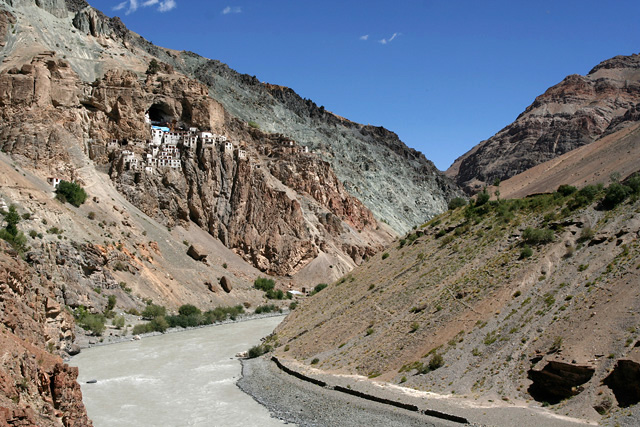
But few monasteries today are really as far away from every place as Phugtal Monastery in the picture above. Located inside a cave on the banks of Lungnak River, it takes two days of walking from the nearest road-head to reach the monastery. And the road head at Padum itself is a two-day of bus ride from Leh. But the distances are shrinking by the day. New roads under construction will link Phugtal in the next few years, and the distance from Leh to Phugtal will shrink to just a day in the next decade when new roads will be built along Zanskar River.
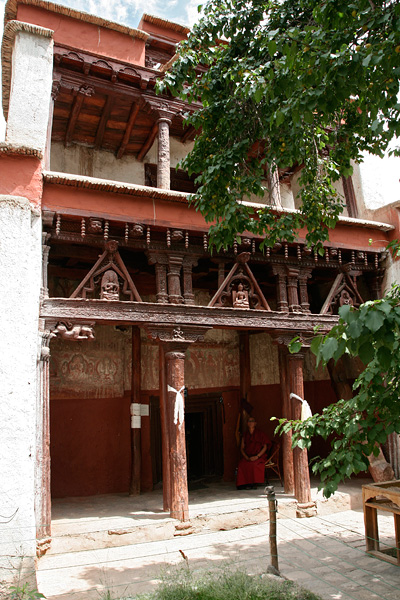
But the monastery at Alchi is an exemption to the trend of building monasteries in unapproachable places. One of the oldest monasteries in the region, Alchi is located on flat ground at the edge of the village, right next to fast-flowing Indus River. Alchi differs from all other monasteries in its design as well. Unlike other monastic institution built with the influence of Tibetan form of Buddhism, Alchi Monastery is said to be built at a time when Buddhism propagated here from Kashmir and the plains of India. The monastery is no longer an active institution, and is currently maintained by the neighbouring Likir Monastery. Rich, beautiful colour paintings have survived the onslaught of time in the inner walls of Alchi. Together with Tabo Monastery in Spiti Valley, Alchi is now in the list of tentative UNESCO World Heritage Site.
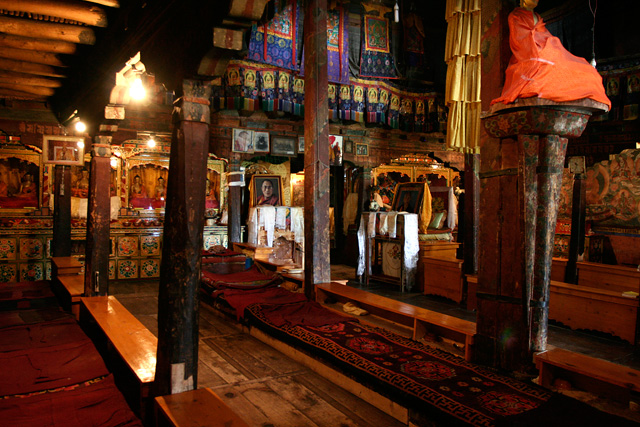
One of the most striking features of the monasteries is the richly decorated prayer hall. The halls are painted from wall to wall with deities and images of Buddhist iconography. The ceiling, the pillars, the seating and the tables, the altar are all decorated with colourful clothes and painting leaving not an inch of room empty, like the prayer hall or dukhnag at Thiksey Monastery in the above picture.
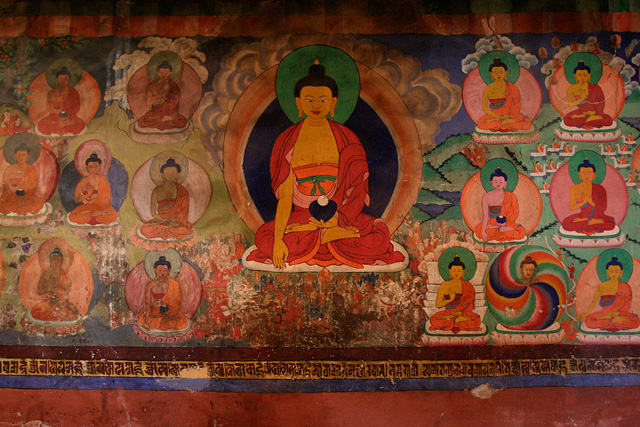
Several incarnations of Buddha, seen on the walls of Thiksey Monastery. Sometimes, the Buddhist iconography can be so detailed and complex that even the monks at the monastery may not be able to describe the details of every one of these murals.
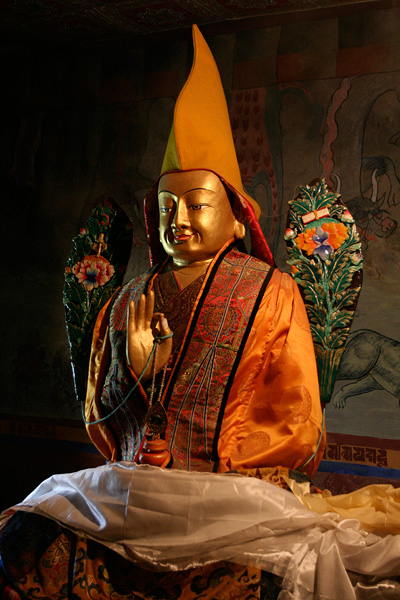
This statue of Tson-ka-pa, the founder of yellow-hat sect (or gelugspa), a popular form of Buddhism in Ladakh and Tibet to which the current Dalai Lama also subscribes to, is frequently seen in the prayer halls of several monasteries across Ladakh.
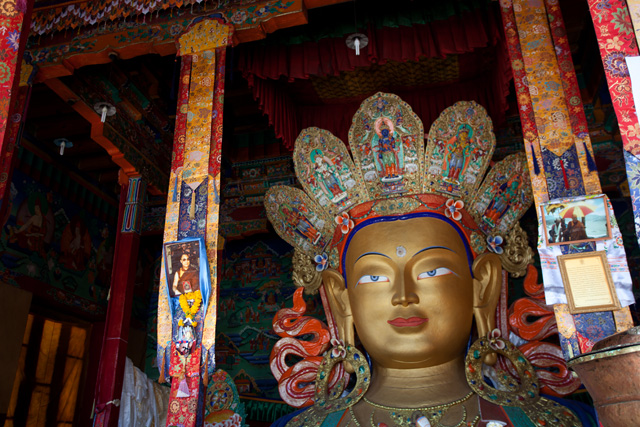
This richly decorated two-storey high statue of Buddha is another beautiful work of art, seen at Thiksey Monastery.
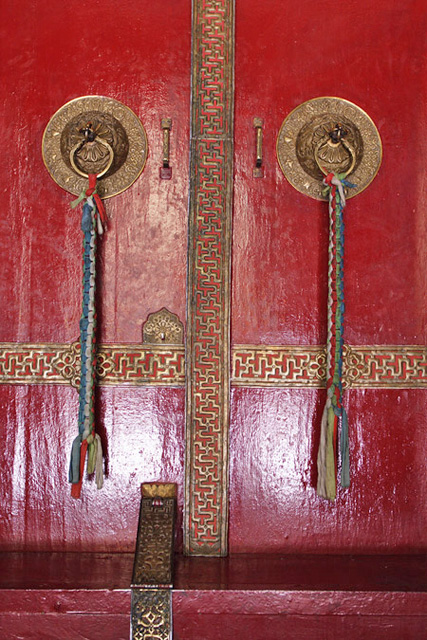
The painted doors of the prayer hall at Diskit Monastery, Nubra Valley, Ladakh
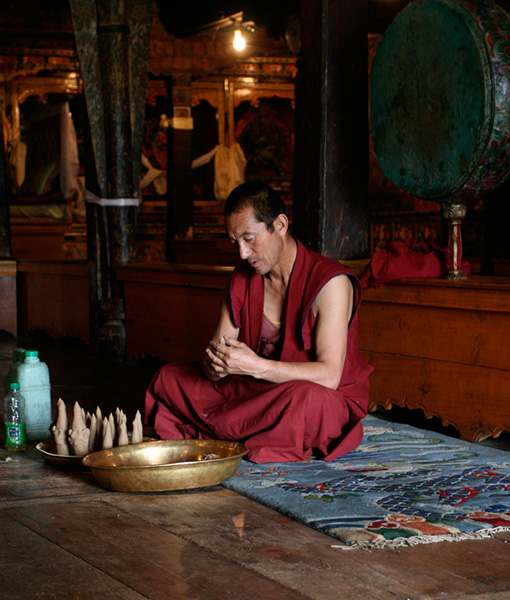
The prayer halls in the monasteries tend to be empty but for a caretaker monk for most part of the day. They come alive and get filled with monks during the morning prayer rituals and on the days when there are special pujas. This monk at Thiksey monastery is preparing torma (?) for decorations for an upcoming puja.
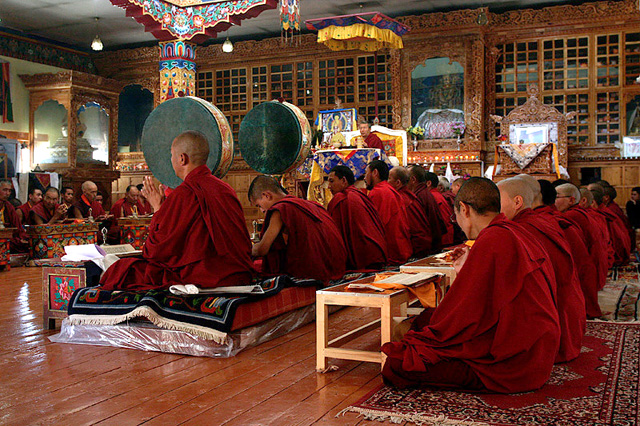
Monks gathered for morning puja at Leh’s Soma Gompa.
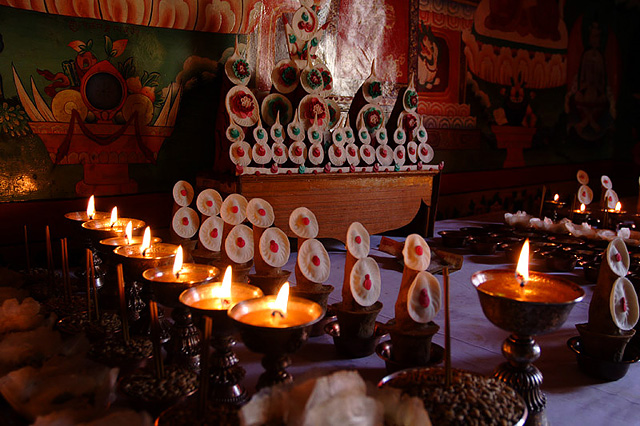
The prayer hall at Likir Monastery comes alive for a special Yamantaka Puja on the event of installing a mandala at the monastery.
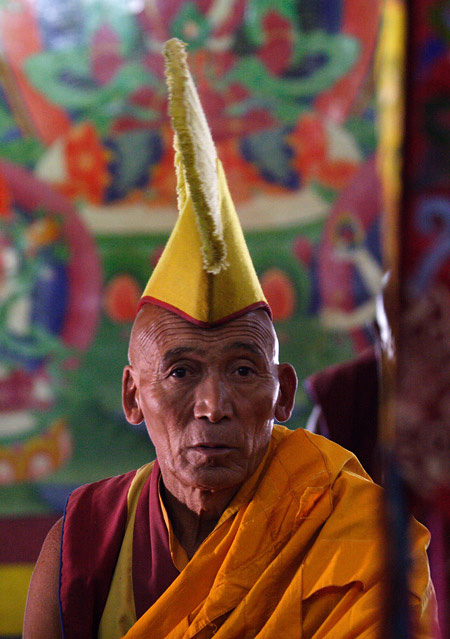
A monk looks on during a special puja at Spithuk Monastery, wearing the traditional yellow hat.
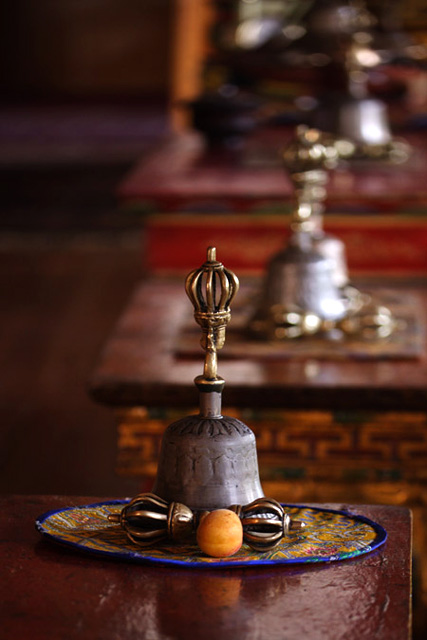
An apricot shares space with bell and a Vajra when the monks take a short break during a special puja ritual at Likir Monastery.
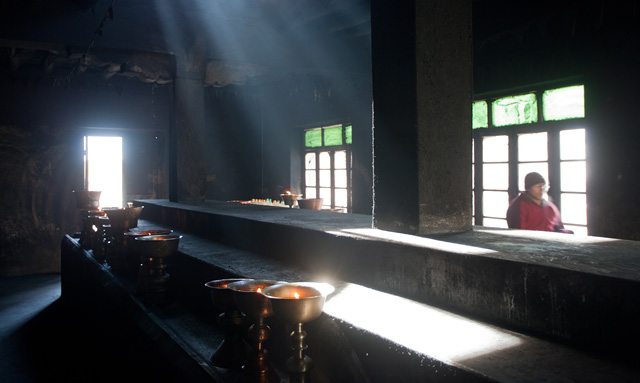
A room of lamp – a small area or a room dedicated for burning wick lamps is a feature of most monasteries in Ladakh. It is a beautiful place where several oil lamps of various sizes and shapes glow in the dull light coming from the windows.
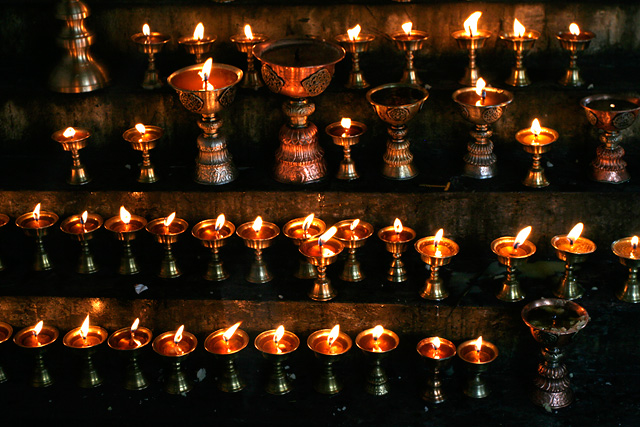
Another room of lamps, this one at Keylong’s Shashur Monastery, all lit up on the day of monastery’s annual festival day.
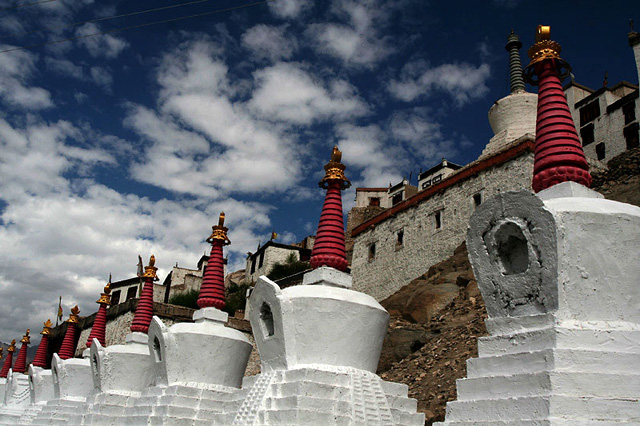
Chortens or stupas (?) are another dominant feature of the monasteries in Ladakh, usually seen in long arrays on the approach to the monastery.
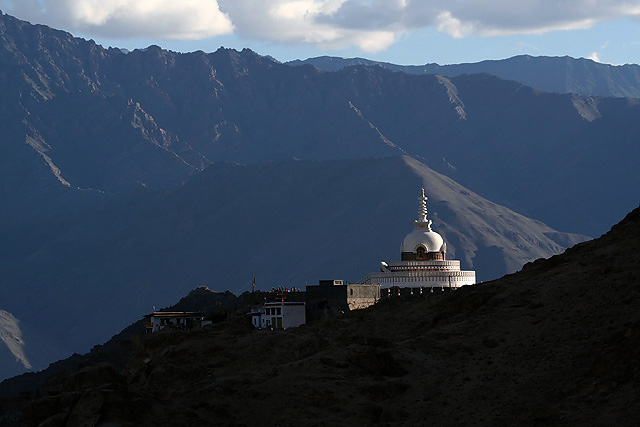
Shanti stupa is perhaps the most dominating and well-known chortens in Ladakh, located on the slopes overlooking Leh town. The views of, and views from Shanti Stupa give a grand preview of Zanskar and Ladakh Ranges and of the spread of Leh Town along Indus Valley.
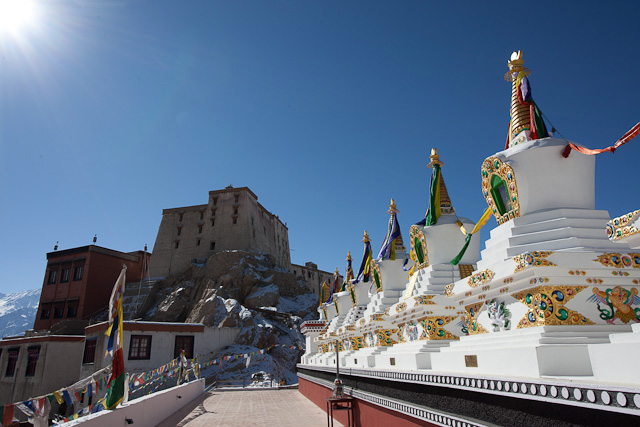
A line of newly built and freshly painted chortens at Thiksey Monastery.
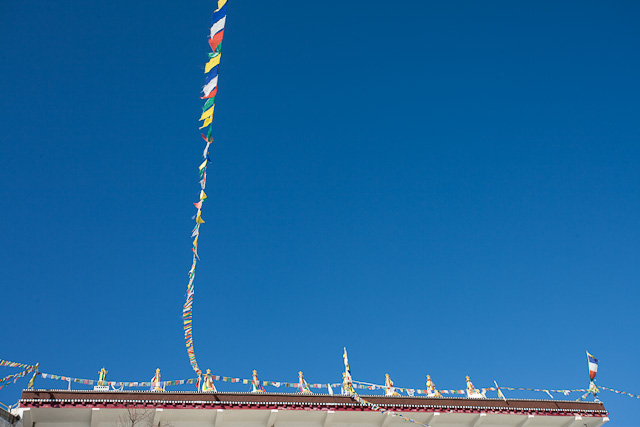
The flutter of prayer flags, a long line of chortens and the clear blue skies make a grand spectacle at Thiksey Monastery.
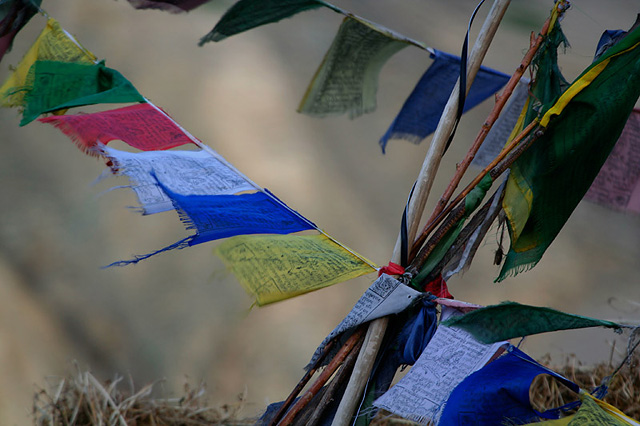
People of Ladakh tie prayer flags at all sacred and important locations. The prayer flags have sacred mantras written on them. Ladakhis believe that when the wind blows, the mantra from prayer flags is carried on and distributed in the air, bringing good karma.
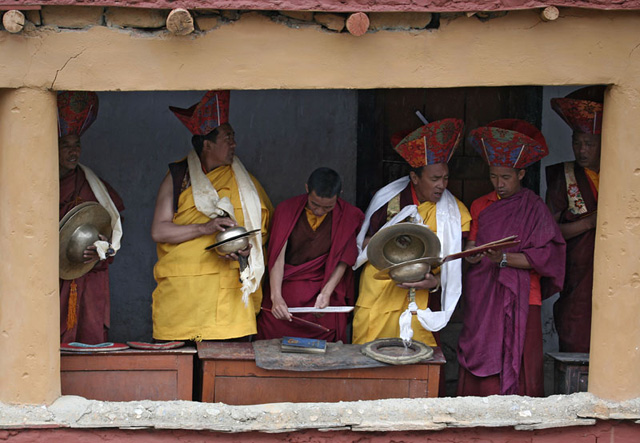
Once in a year, these monasteries celebrate their annual festival, when the premises will be buzzing with activity. The monks prepare for two long days of festivities which involves pujas, traditional music and dances. It is usually attended by the whole village and a large number of outside visitors.
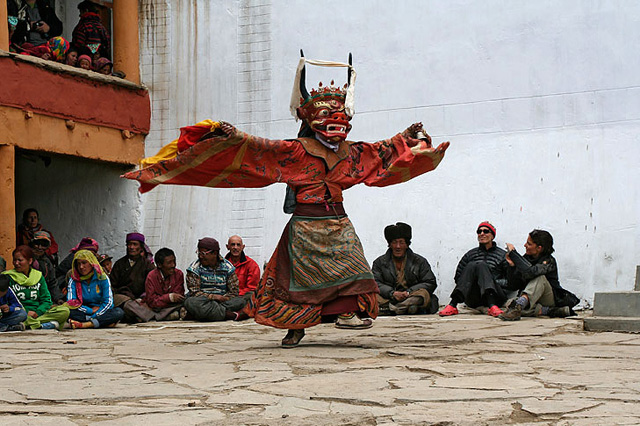
The most sought after event of the festival is the cham-dance, a performances by the monks wearing demonic looking masks.
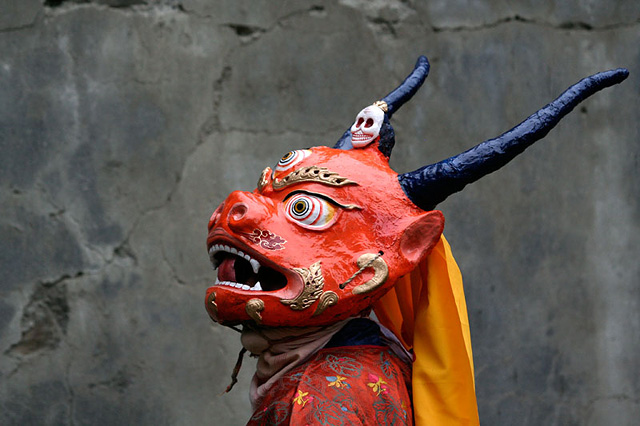
A masked monk performing at Gustor Festival at Korzok Village near Tso Moriri Lake.
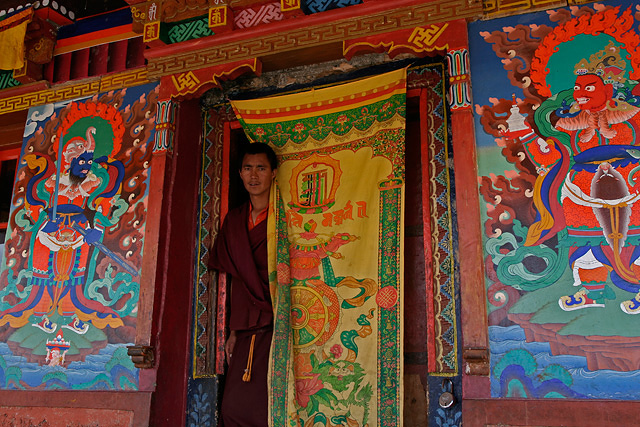
A monk looks through the doors of prayer hall at Korzok Monastery as they prepare for the festivities.
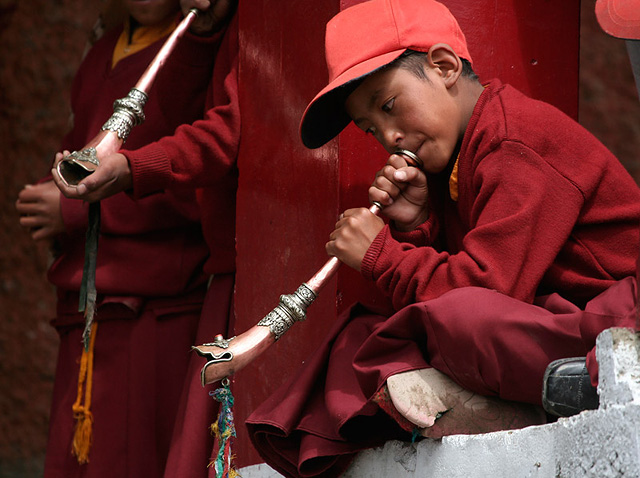
Young monks make an energetic participation at Korzok Gustor Festival.
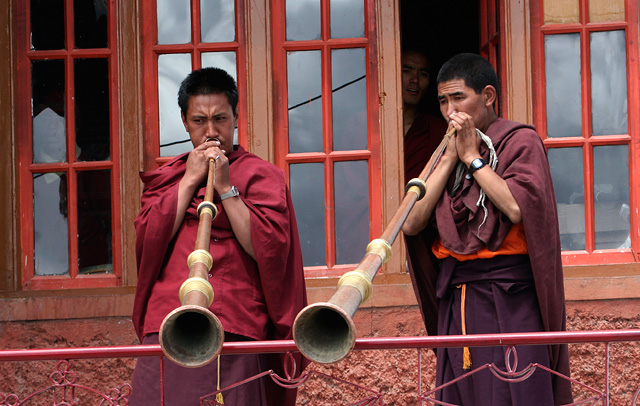
Dung chen, a long wind instrument is used to announce the arrival of rinpoche (chief monk) or the cham dancers. It is best compared to vuvuzelas, both in terms of their length and the sound coming from them.
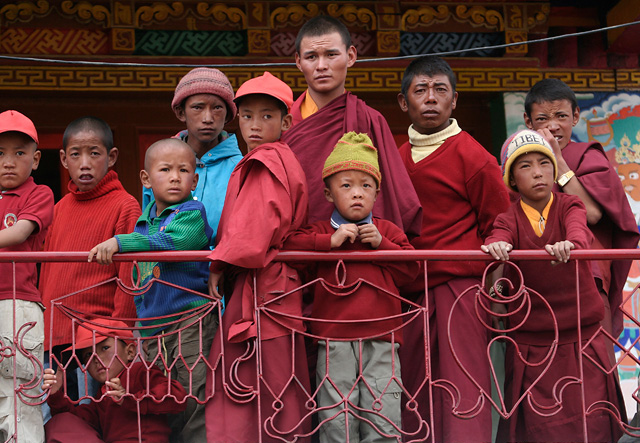
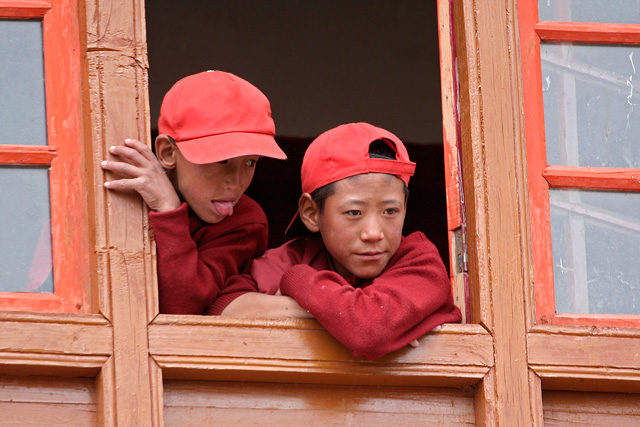
Young monks of different ages watch a cham-dance in progress during Korzok Gustor Festival.
 Dates: July 2nd and 3rd, Saturday and Sunday
Dates: July 2nd and 3rd, Saturday and Sunday
































